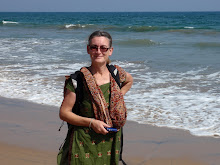There is some indication that they have little contact with people from outside their communities but all the Adivasi that I have met have made me feel very welcome, despite my inability to speak any of their language. Gatherings of people representing these communities are a valuable way of them sharing their concerns, experiences and ideas and to have a much-needed celebration of their culture. The short time that I have spent working in this community has made me wonder if these people have got it right. They lack formal education opportunities and the ability to read and write is essential in many parts of the world and can lead to so much other learning. Many suffer from malnutrition, starvation occurs, serious and preventable health problems are not uncommon and there are frequent reports of serious exploitation, abuse and even killing of tribal people. However they get (or provide) a different sort of education, learning how to live with and for the land and to leave little impact on the environment. Do they have a greater chance of surviving than those of us who are highly dependent on an oil-based economy, acquiring lots of material goods that we don't really need to survive, churn out carbon emissions, depending on others to supply us with our food and basic living needs and where harvesting a crop usually means destroying the plant that produced it?
 I was told that this is a wine tree. A branch is cut and the sap seeps out of the cut end into a bowl suspended underneath the cut end. Or at least the bowl collects what the birds don’t get first. It does not seem to harm the tree, the wound heals and the tree and continues sprouting quite happily.
I was told that this is a wine tree. A branch is cut and the sap seeps out of the cut end into a bowl suspended underneath the cut end. Or at least the bowl collects what the birds don’t get first. It does not seem to harm the tree, the wound heals and the tree and continues sprouting quite happily. The trick to harvesting this ‘wine’ (which is not alcoholic) is shinning up a bamboo pole ladder to get to the source.
The trick to harvesting this ‘wine’ (which is not alcoholic) is shinning up a bamboo pole ladder to get to the source. There were several nests woven high up in the branches. I've heard of weaver birds - wonder if these nests belong to them?
There were several nests woven high up in the branches. I've heard of weaver birds - wonder if these nests belong to them? I think that this is a banyan tree with harvested paddy fields behind and cashew trees in the distance.
I think that this is a banyan tree with harvested paddy fields behind and cashew trees in the distance. Street cleaning. It was one of the cleanest places that I've had the pleasure of visiting.









No comments:
Post a Comment